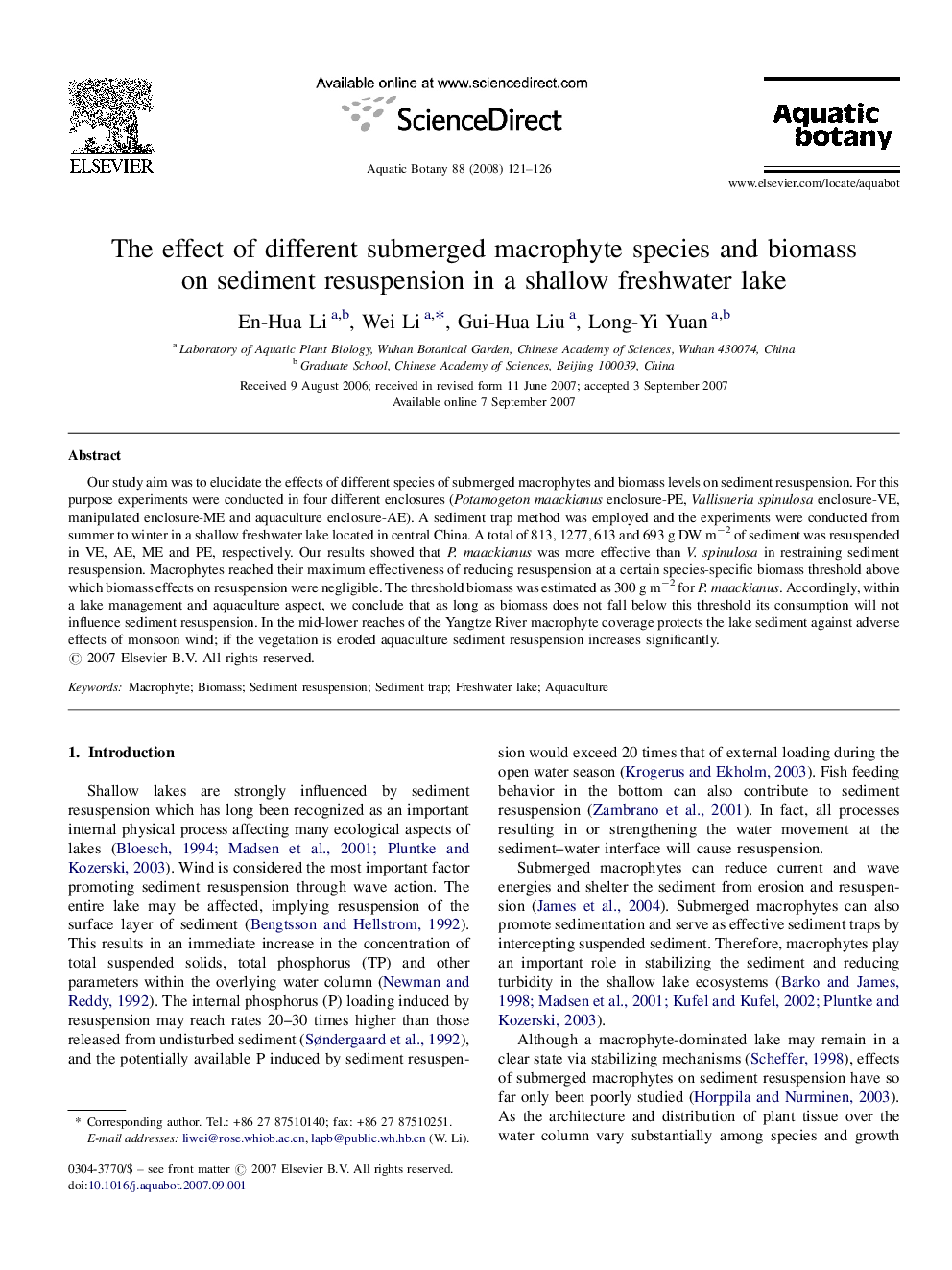| Article ID | Journal | Published Year | Pages | File Type |
|---|---|---|---|---|
| 4528667 | Aquatic Botany | 2008 | 6 Pages |
Our study aim was to elucidate the effects of different species of submerged macrophytes and biomass levels on sediment resuspension. For this purpose experiments were conducted in four different enclosures (Potamogeton maackianus enclosure-PE, Vallisneria spinulosa enclosure-VE, manipulated enclosure-ME and aquaculture enclosure-AE). A sediment trap method was employed and the experiments were conducted from summer to winter in a shallow freshwater lake located in central China. A total of 813, 1277, 613 and 693 g DW m−2 of sediment was resuspended in VE, AE, ME and PE, respectively. Our results showed that P. maackianus was more effective than V. spinulosa in restraining sediment resuspension. Macrophytes reached their maximum effectiveness of reducing resuspension at a certain species-specific biomass threshold above which biomass effects on resuspension were negligible. The threshold biomass was estimated as 300 g m−2 for P. maackianus. Accordingly, within a lake management and aquaculture aspect, we conclude that as long as biomass does not fall below this threshold its consumption will not influence sediment resuspension. In the mid-lower reaches of the Yangtze River macrophyte coverage protects the lake sediment against adverse effects of monsoon wind; if the vegetation is eroded aquaculture sediment resuspension increases significantly.
